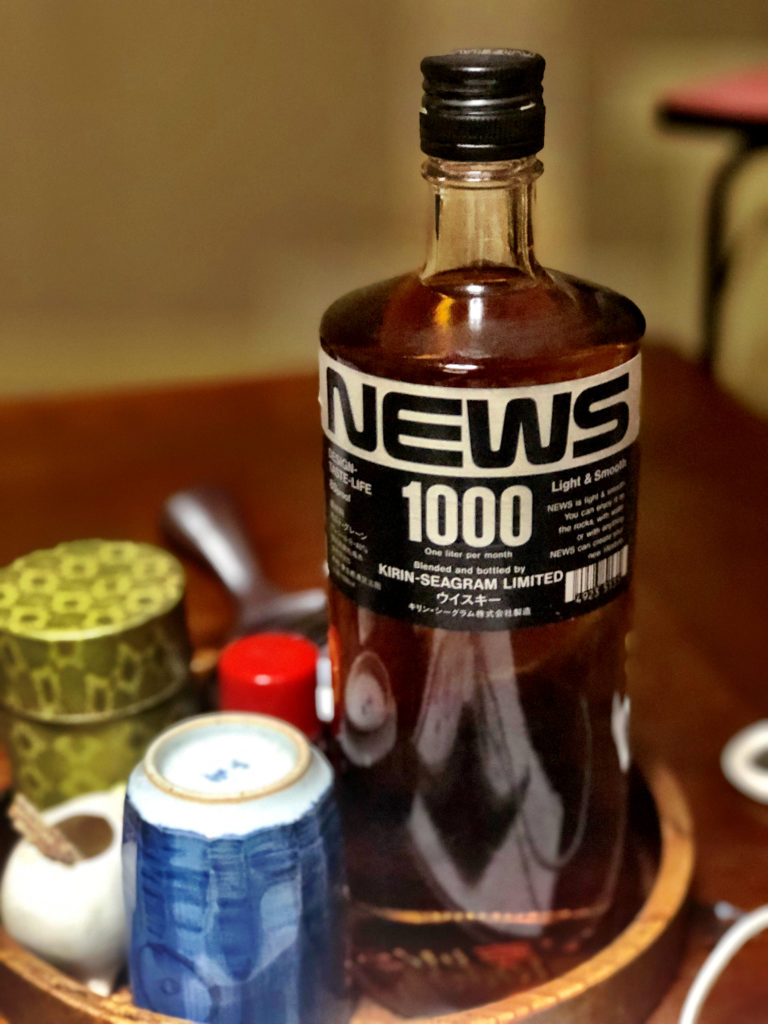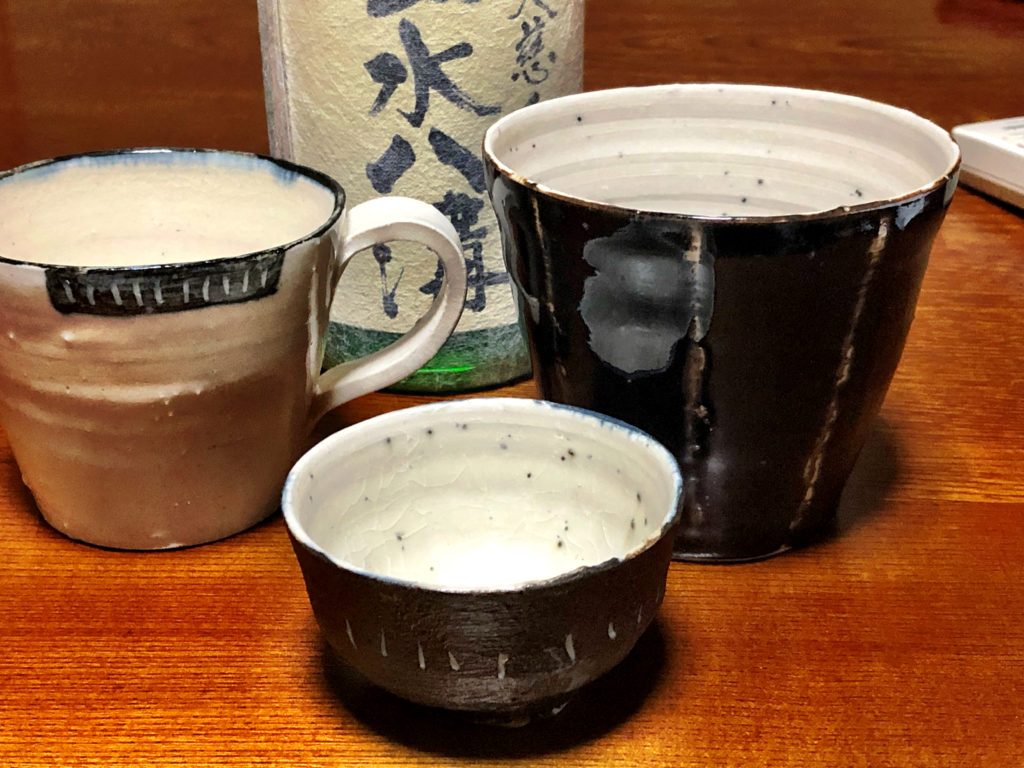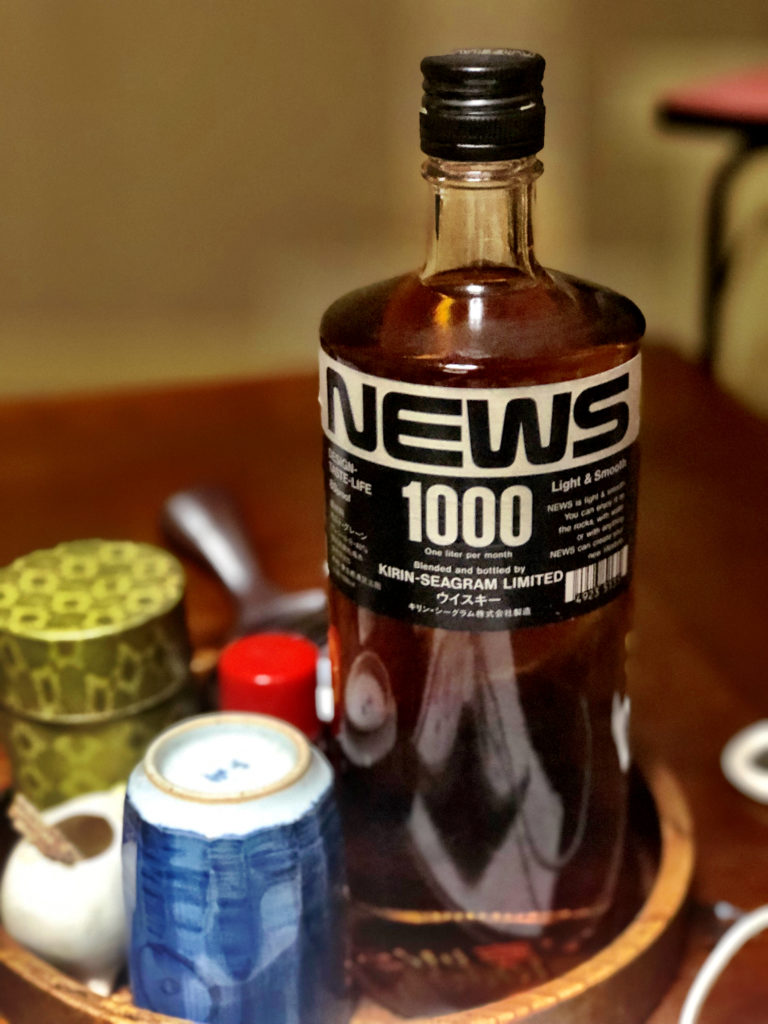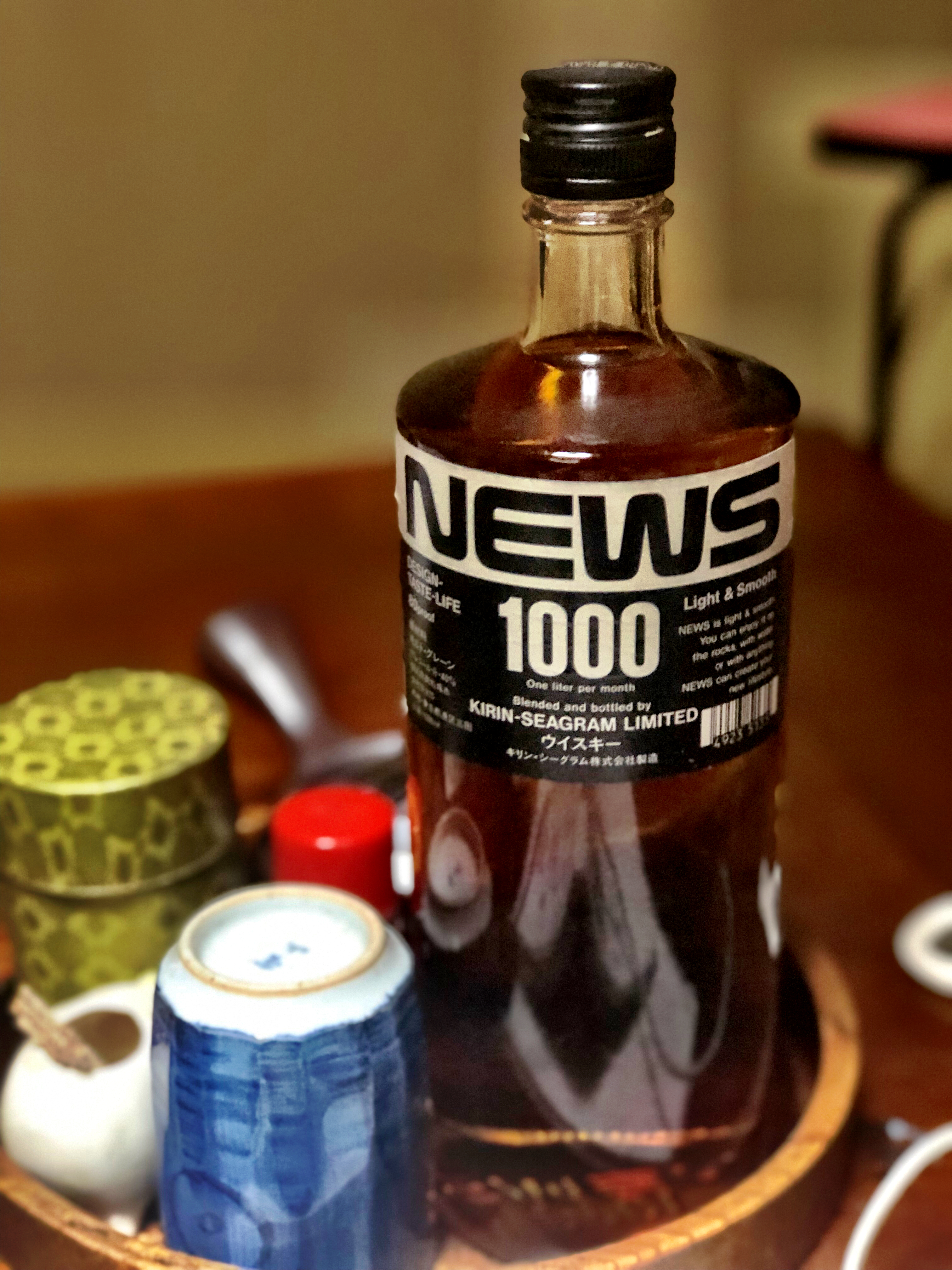
“Take this whisky, please,” said the elderly Japanese man running a liquor store in a small town in Ibaragi Prefecture. He was cheerful and insistent. “It’s called News and you’re a journalist, so it’s the perfect blend. Please, I have two bottles and it’s just gathering dust.” And as I protested, he pulled it off the shelf, lightly dusted it, put it in a bag and handed it to me.
It is April 20th 2019. I’ve been in Ibaragi for two days working on four stories with a television crew. The four stories are:
1) The problems Japan’s traditional lacquerware artists (urushi/漆の職人) are facing as the artisans capable of harvesting the sap from the urushi trees die off.
2) The mild and refreshing green tea of the region (奥久慈茶) which has almost died out due to the Fukushima disaster.
3) The tradition of crafting ink-stones (硯/suzuri) which are essential for beautiful Japanese calligraphy (Shodo/書道・習字)
4) The history of konyaku (菎蒻) which is used to make Shirataki noodles, faux sashimi, and has become very popular because it’s filling and low in calories.
I was also considering a fifth story about the local delicacy: Shamo. Shamo (軍鶏) are free-range chickens that were originally fighting birds (喧嘩鳥) used in cock-fights and later domesticated. We had lunch at a place famous for it’s Shamo Oyako-don, which is chicken and egg over rice. Oyako means parent and child and if you think about it, eating a chicken with egg, is kind of horrifying. Don’t think about it.
The town we were visiting once had a population of over 40,000 people 20 years ago, but is down to a third of that number. The Game Center is shuttered and looks like it has been that way for many years. Many of the stores on the main road are out of business. Trains come once per hour and after 5pm, you can’t even leave by train.
I had some time to kill after lunch at the local restaurant and walked over to the liquor store down the street. There appeared to be no one inside but the light was on, so I opened the door. Within a minute, a cheerful, and dapperly dressed thin man with grey hair and grey slacks came out and greeted me. I looked around the store—and on one shelf were three bottles of Suntory Whisky, each which must have been ten years old or more. We chatted and I tried to buy one of them from him.
“I couldn’t sell these to you in good conscience. They’re very old.” He opened one and showed me the line of the whisky. “You can see some of it has already evaporated. It wouldn’t be fair to sell it to you.”
I thought about just giving him three times the price of the bottle on display. The hand-written card in front of the bottle was slightly discolored. I realized that this guy had no idea how much Japanese whisky was now worth. And you know, like everyone in the world, I had this fleeting thought of, “Wow, I could really make a fortune buying this guy’s whisky for a fraction of what’s it worth.” I thought about doing that….and then I explained to him that the price of Japanese whisky, especially old whisky, was skyrocketing.
He listened with some interest and raised an eyebrow. “To be honest, I don’t really like whisky. I’d rather drink something else. So I had no idea. How about you? Are you a whisky fan?”
“I like sake–given a choice.”
He nodded. “Me too. This might be my favorite,” he said while handing me an empty bottle of Kudoki Jozu. The name of the sake loosely means, “Talking a woman (man) into having sex with you.” It is also a delicious, dry and tart wonderful sake. I told him that I was fond of Suigei (酔鯨/drunken whale) and the local brew. We talked for fifteen minutes but then I had to leave. I asked him to consider selling me one bottle of whisky and he said he’d think it over.
Today, I dropped by the liquor store once more, before it closed–meaning before 5:30 pm. He greeted me like an old friend and he showed me all his favorite booze, including the empty bottles, collector’s items, and everything Suntory that he had–as well as some rare Nikka whiskies. However, he wouldn’t budge on selling me any of them. “I don’t know if they’ve aged well. I’d feel bad.”
But then, as if he had been waiting, he pulled off a back shelf a 1000 ml bottle of a whisky I’d never heard of, Kirin-Seagrams whisky NEWS. I looked for some information on the bottle but all it told me was that it was 80 proof, malt-grain. And some odd notes in English: One Liter Per Month. NEWS is light & smooth. You can enjoy it on the rocks, with water, or with anything. NEWS can create your new lifestyle.
I thanked him—he was insistent I take it–and took the bottle back to where I was staying and began pulling up what I could find about it on the net. It had been launched by Kirin around 1983, and they had even hired a hot Hollywood actor, Jan Micheal Vincent, to shill it in a Japanese commercial. The commercial was taken off the airwaves when it was widely reported that Vincent was an alcoholic; his alcoholism was definitely not good news for the NEWS brand name.
I wondered what it might taste like. One guy had found a bottle in the home of a relative, consumed the whole thing and posted a review. He noted it was free from any peculiarities and had crisp and clear taste. I found one or two web sites selling bottles of it with prices ranging from $50 to $400 (as part of a set).
So as I sat in my room, my conscience began to bother me. Because I don’t think he realized he’d given me $50 worth of booze–and a whisky that is no longer in production. I decided I needed to buy something from his store at least. The problem was that there was no ATM anywhere in site. Even the convenience store at the station didn’t have an ATM. I borrowed money from the cameraman, rather sheepishly, and ran back to the store before it closed. He was mildly amused to see me again and before he could ask any questions, I said, “You gave me a great bottle of whisky. Let me at least buy something. What’s the best sake here?”
He thought about it and then pulled off the shelf a bottle of (家久長・霊水八溝/Hakucho-Reisuiyamizo). I bought it and asked it was dry sake (辛口) and he whispered, “It used to be very dry but these days it’s sort of in the middle. It’s still very good.”
He sold it to me at wholesale price. I didn’t have any room in my bags left for another bottle of sake and the 1000 ml bottle of whisky, so I looked for something else in the store. There was some really beautiful looking pottery–a sake glass, a tea cup, and a coffee cup. I asked if they were also for sale and he replied, “Oh, my friend asked me to put those there. He’s a potter. He makes good pottery. You can buy them, if you really want do.” And so I did.

He packed them up nicely and I profusely thanked him. As I was leaving and he started turning off the lights and closing the store, he said to me, the following words.
“Well, if you ever do make it back this way again, let me know. I might sell you the whisky if you really want me to. You might know better than me. But if I were you,” he paused, “I’d drink that whisky I gave you with a bunch of your fellow journalists. It’s a lot of whisky. If you never drink it, it’s just going to end up somewhere else gathering dust and that’s a shame. Good booze is meant to be savored, not to be kept on a shelf. Thanks for coming in.”
Sometimes, I forget one of the reasons I have come to love Japan over the years–the unexpected kindness of strangers. It happens more often than you’d expect.
And so even with what I paid for the sake, the teacups, the coffee cup and the sake glass–I still didn’t pay anything close to what the whisky is worth. So maybe I will drink it with a group of friends after all. The sake has been around longer than I’ve been in Japan and maybe drinking it with friends would be the perfect way to celebrate what will be over three decades in Japan this summer. (I arrived in Japan on September 14th 1988).
Of course, I also feel a journalistic duty to drink this booze. It looks like the liquor advertised in 1983 and is being sold at an incredible mark-up all over the world, but I can’t be sure. If I don’t open it up, drink it, and confirm it with multiple sources–I’ll never know whether it’s real NEWS or fake NEWS.
Sometimes, to make sure you’re getting real NEWS, you need expert advice, good friends, several sources and some big round ice cubes.


good